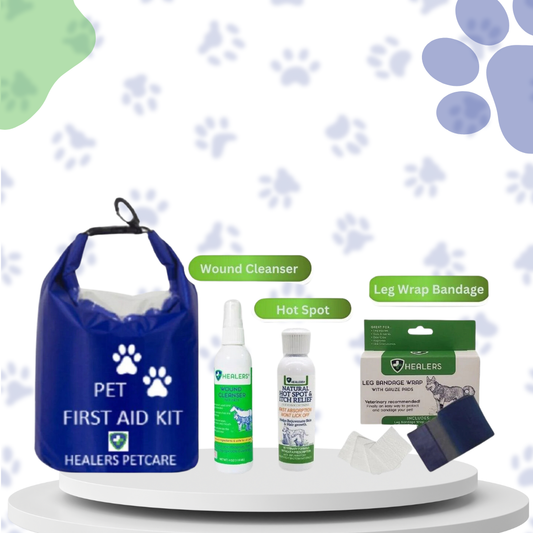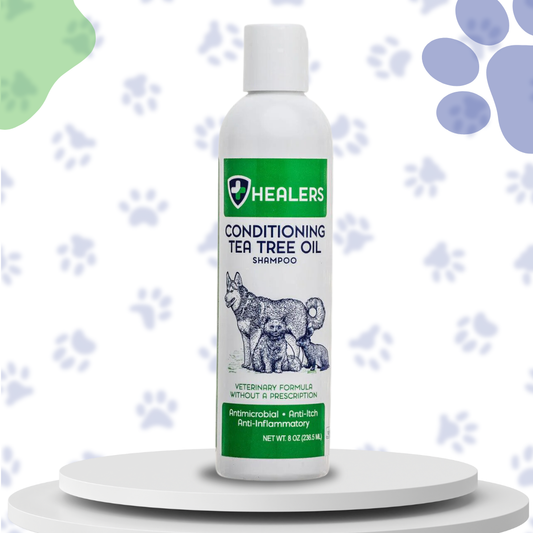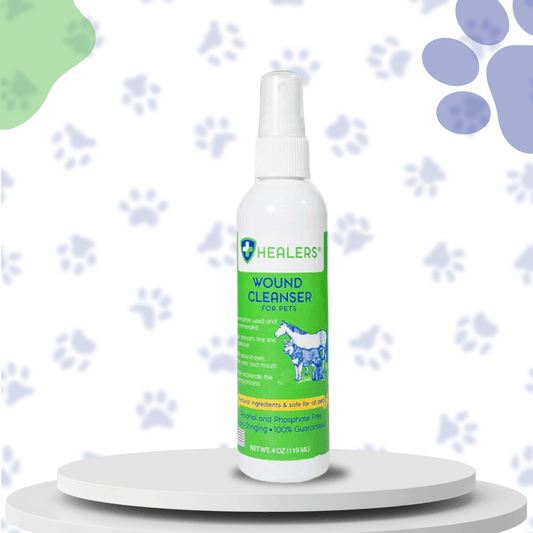Training a Dog to Walk on a Leash
Share
Training a Dog to Walk on a Leash

Ever experienced that heart-pounding moment when your furry friend decides it's time for a street race, with you being the unwilling participant? Yep, been there, done that – felt the burn in my palms and the breeze in my ears.
But no worries, because if you stick around and read on, you're in for a lifesaver! This article is your go-to manual for transforming your enthusiastic four-legged buddy from a drag racer into a refined walker.
By the time you finish reading, you'll be armed with all the savvy techniques to have your pup walking down the path of politeness – no more speed contests. Your canine companion will be strolling like a true-blue gentleman or a gentlewoman before you know it. Get ready to enjoy those leisurely walks!
Importance of Leash Training
Alright, let's dive into the perplexing question that's been boggling our minds: Why on earth is leash training such a big deal?
Imagine this: You're out for a nice, chill stroll with your furry sidekick. The sun's shining, the breeze is friendly, and everything's dandy. But oh snap – what's that? A squirrel, the ultimate attention grabber!
And just like that, your dog's inner sprinter emerges, Usain Bolt style, laser-focused on that fluffy-tailed critter. Total chaos ensues, leaving you huffing and hoping your shoulder doesn't go "pop."
As we see it, leash training is like a superhero cape for safety – not just for your pup, but for you too. From the moment your puppy leaves their mom, it's the key to keeping things under control and avoiding those accidental acrobatics. Safety first, folks!
But that's not all. Leash training is like the Jedi training of good behavior. It keeps your doggo's brain engaged and their manners on point. Plus, it's like a friendship accelerator between you and your furball – those walks become a bonding bonanza.
Benefits of Walking a Dog on a Leash
Let's now dive into the tail-wagging advantages of leash walking – it's a pawsitive parade of perks!
- First things first, we're talking safety here. That leash? It's like a magic cord of understanding between you and your four-legged buddy. It's the ultimate shield against danger, steering them clear of mishaps like Formula 1 cars, sassy porcupines, or that neighbor who's all about Hawaiian shirts in the icy months. Safety dance, anyone?
- Leash walking is like a double-dipped ice cream cone of benefits. Firstly, exercise galore! Think of it as a two-in-one deal – a workout for both you and your doggo. Goodbye, pent-up energy that leads to redecorating disasters involving cushions and shoes.
- And let's not forget the mental gymnastics. That stroll? It's like a mind-bending puzzle for your pup, keeping boredom at bay. They're not just walking, they're decoding a symphony of scents, marking their trail, and meeting their furry amigos along the way. Sniffs and socializing – what's not to love?
Understanding the Basics of Leash Training
Alright, imagine you're crafting a doghouse – you wouldn't start slapping on the roof before building that solid base, right?
No, you need a solid base, just like you need a strong bond with your pup. Let’s dive a bit deeper into the the basics:
- Let's break down the leash and collar/harness duo. Think of them as your dog's stylish accessories for training success. Pick a leash that's tough and gives them room to wiggle (no retractable leashes turned slingshots, please). Opt for something comfy that won't bug them and makes them feel like the coolest pup on the block.
- Comfort and safety? Well, we wouldn't sprint a marathon in shoes that pinch or a crown that feels like a medieval torture device, right? Our fur buddies deserve the same consideration. Their collar or harness should be snug but not like a neck-hugging vice, allowing them to strut their stuff without issues. Remember, give those straps a once-over for wear and tear – safety's the name of the game.
- Now, let's talk about your grip on that leash. It's not a tug-of-war rope, it's the lifeline of connection between you and your furball. Hold it with a chill grip, skip the tense tugs and jerks. Your pup will dig the gentle vibe, and they'll groove to your cues like a well-tuned dance.
Preparing for Leash Training
Commands
We're diving into the classics: sit, stay, and come. These commands? Think of them as the canine ABCs, the foundation of doggy dialogue.
When your furry Einstein nails these, it's like they're flipping through a novel instead of staring at a jumbled alphabet soup. Yup, they're on a whole new level of understanding.
First, lay down the law in a distraction-free zone. Imagine it as a zen room where you and your pup are the meditation masters. Think of it this way, even the grandest of wizards started their magical journey in a quiet, peaceful place.
Introduction
Once your pup's acing those commands like a true champ, it's time to roll out the next level.
Say hello to the leash and collar/harness duo – the dynamic doggy duo!
But we're not aiming for a "canine torture device" vibe here, definitely not the look we're going for.
Let's make this a party of positivity!
Introduce the leash like it's a VIP guest. Let your pup give it the good old sniff and check-out treatment. And hey, bravery deserves a standing ovation – give 'em treats and praise like they've just conquered Mount Mystery Leash.
Getting Started with Leash Training
Location
Let's kick things off with a crucial move – picking the right training spot. Think of it like setting the stage for a cozy dinner (minus the candles and flowers, unless your pup is into that).
Your starting point? A serene and familiar zone, miles away from the chaotic dog park or bustling boulevards. Why? 'Cause we're aiming for distraction-free vibes. This way, your pup can channel all their inner champ energy into mastering the art of leash walking.
Positive reinforcement
Imagine this: Your pup takes one step forward with a leash as loose as a sleepy kitty. Cue the confetti, my friend, 'cause that's a victory worth throwing a party for!
Time to roll out the treats or dish out some praise fireworks.
Positive reinforcement is like a surprise sunbeam on a gloomy day – it's all about linking good behavior with stuff your pup goes gaga for.
We're talking about scrumptious treats and compliments that rival a royal decree. After all, who can resist a bit of extra motivation served with a side of belly rubs
Being consistent
Last but not least, consistency is the name of the game. Establish a training routine that works for both you and your pup. Whether it's a daily walk or a designated training time, stick to it like peanut butter sticks to the roof of your mouth. Dogs thrive on routine and predictability, so by providing them with a consistent training schedule, you're setting them up for success.
Proper Leash Handling
Here's the scoop that often slips by many dog owners, especially the newbies in the game: the leash-holding maneuver.
Let's clear things up: it's not a tug-of-war championship, nor is it an avant-garde wrist accessory. The golden rule? Think firm yet chill, like how you'd hold hands with your favorite person. The goal is control without morphing your hand into a statue.
Now, let's tackle the leash version of bungee jumping – the dreaded pulling and jerking. Just as we wouldn't play tug-of-war with our pals, we're skipping that game with our pups too. The trick? Nix the temptation to launch your dog into orbit. Opt for a steady, smooth pace instead.
That consistency? It's like a stability blanket your pup will snuggle into, and you? You'll sidestep any unplanned Cirque du Soleil stunts.
Dealing with Distractions
Distractions, ahoy!
These tricky troublemakers love to crash the leash training party. Just when you're starting to feel like the leash maestro, a squirrel or a mysteriously appealing fire hydrant swoops in, and your pup's focus goes on vacation.
I've got a couple of nifty tricks up my sleeve for you though.
Step one, let's welcome distractions in through the back door. Think of it like building up your resistance to your favorite treats – one nibble at a time. Begin in a cozy corner with distractions on mute, and as your pup's leash skills evolve, crank up the challenge meter.
Now, when the distraction bug bites, no need to sound the alarm! Time to bust out your inner Jedi. Imagine waving a wand and uttering, "Behold, focus on me, my furry apprentice!" Use your magic phrases like "look at me" or "leave it" to pull your puppy's attention back from the brink. And when they heed the call, raining treats and compliments like confetti is the way to go.
How to Stop Your Dog From Pulling on a Leash? Troubleshooting Guide
Dealing with a dog that's pulling on the leash can be a bit frustrating, but don't worry, I've got you covered with some simple steps.
Just like how we need the right kind of fuel to stay healthy, our furry friends need the right guidance to learn proper leash manners.
Start with the Basics: Imagine you're teaching your dog a new trick. Begin by walking around the house or yard with your pup on a leash. This helps them get used to the feeling without any distractions.
Use Tasty Treats: Dogs are like us when it comes to tasty rewards. Whenever your pup walks by your side without pulling, give them a small treat. This positive reinforcement helps them associate good behavior with yummy things.
Stay Consistent: Dogs learn best when there's a routine. So, every time you head out for a walk, remember to be patient and consistent with your training. Practice makes pawfect!
Change Directions: Dogs love to explore, but we want them to explore with us. If your dog starts tugging, quickly change your direction. This teaches them that tugging won't lead to where they want to go.
Be Patient and Pawsitive: Learning takes time, and sometimes our furry friends get excited. Stay patient and use a cheerful tone. They'll pick up on your positive energy.
Use Proper Equipment: A well-fitting harness can give you better control and discourage pulling. Unlike a regular collar, it won't put too much pressure on their neck, keeping them comfy.
Avoid Pulling Back: It might sound counterintuitive, but if your dog pulls, avoid tugging back. This can turn the walk into a tug-of-war game. Instead, stop walking, wait until they ease up, and then start moving again.
Seek Professional Help: If things get tricky, consider enlisting the help of a professional dog trainer. They can give you personalized advice based on your dog's unique personality.
Burn Off Extra Energy: Sometimes, dogs pull because they're just overflowing with energy. A short play session before the walk can help them burn off some steam, making them more relaxed during the walk.
Enjoy the Journey: Remember, walks are meant to be enjoyable for both of you. Take time to smell the roses, let your dog explore, and have fun together. Building a strong bond is what it's all about!
Final Thoughts
Leash training is like unlocking a leash-tastic pass to a world of walking wonder with your fluffy companion. It's all about weaving that unbreakable bond, giving positive vibes a VIP seat, and fearlessly facing any hiccups that come your way. As you walk this path, you're not just walking – remember, you're bonding, you're connecting. It's turning walks into shared adventures, laughter, and furry fun. So, go on, embrace this journey with a high-five to optimism, and let that leash lead you both into a parade of joy and connection!
*** Paw protection is an important factor when walking your fur friend. A well-fitting dog boot, like Urban Walkers, will protect your pets paw pads against elements, hot or cold temperatures, and terrain.
Guest Blogger: Zack Keithy is the Chief Editor at Daily Dog Drama. He was formerly a certified vet tech for a good 6 years before moving on to greener pastures. Right now, he is still heavily involved in dog parenting duties with his two dogs, Molly and Bella. At the same time, he is busy creating lots of useful resources like this dog pregnancy calculator for fellow dog owners to use. Check them out on his blog!





